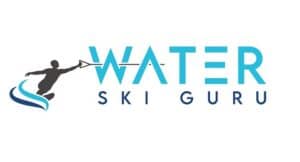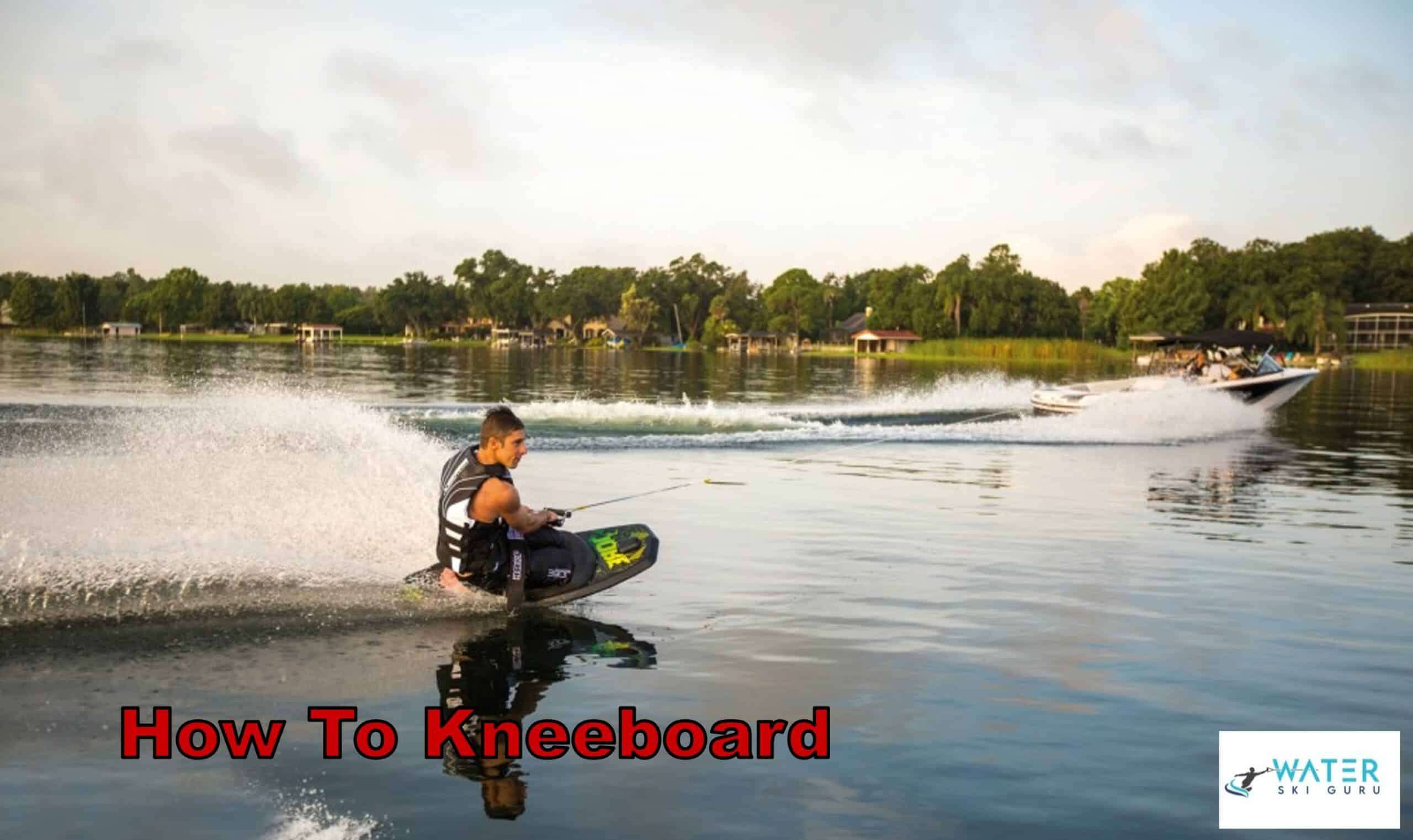As someone who has kneeboarded for years, I can attest to the thrill and excitement that this water sport offers. Kneeboarding is a fun and challenging way to experience the rush of gliding across the water’s surface while performing tricks and maneuvers.
In this article, I will share my knowledge and expertise on how to kneeboard so that you too can master this thrilling activity. Kneeboarding requires technique, skill, and practice, but with dedication and guidance, anyone can become proficient in this exciting watersport.
Whether you’re a beginner or an experienced rider looking to improve your technique, this article will provide you with all the necessary information needed to take your kneeboarding skills to the next level. So let’s dive into understanding the basics of kneeboarding!
Understanding the Basics of Kneeboarding
You’ll start by lying face down on the kneeboard with your arms outstretched in front of you, gripping the tow rope handle. The key to kneeboarding is proper body positioning. Keep your weight evenly distributed across the board and keep your feet together, with your toes pointing towards the back of the board.
When choosing a kneeboard, consider your skill level and riding style. Beginners should opt for wider boards with more buoyancy, while advanced riders can benefit from smaller, faster boards. It’s also important to understand the water conditions before heading out. Calm waters are ideal for beginners, while choppy or rough waters require more experience.
Safety gear is essential when kneeboarding. Always wear a life jacket and a helmet to protect yourself from potential injuries. Additionally, make sure that the tow rope is attached securely to both the boat and your board before starting.
To avoid common mistakes such as falling off too early or losing control of the board, focus on keeping a low center of gravity and maintaining a steady pace behind the boat. With practice and patience, you’ll soon be able to master this fun water sport!
Preparing for Your Kneeboarding Adventure
Get ready for an exciting water experience by making sure you’ve got the appropriate safety gear and equipment. When choosing your kneeboarding equipment, consider getting a board that’s suitable for your weight, height, and skill level. It should also have comfortable foot straps and be made of durable materials.
Additionally, make sure to wear a life jacket at all times and consider wearing a wetsuit if the water’s chilly. Safety precautions are essential when kneeboarding to avoid accidents or injuries. Before starting your adventure, it’s crucial to check the weather forecast and only go out on calm waters with little wind or waves.
Avoid crowded areas where there may be other boats or swimmers around. Always keep an eye out for obstacles in the water such as rocks or buoys. Lastly, never kneeboard alone; always bring a friend or family member along who can assist you in case of an emergency.
Finding the right location is also key to having a successful kneeboarding session. Look for areas with smooth water surfaces like lakes or coves that are ideal for beginners as they offer less turbulence than open oceans. Practice getting comfortable on the board before attempting any tricks by lying flat on your stomach first to get used to its movement.
Once you feel confident enough, slowly transition into kneeling position while maintaining balance and stability until you’re ready to stand up and ride those waves!
Proper Board Positioning and Handle Grip
Proper board positioning and handle grip are essential for a smooth and enjoyable kneeboarding experience, so let’s take a closer look at how to achieve them!
First, foot placement is crucial. Your front foot should be placed near the nose of the board while your back foot should be positioned on or slightly behind the fins. This ensures proper balance and control.
Body alignment also plays an important role in kneeboarding. As you position yourself on the board, make sure that your shoulders are parallel to the board’s edge and your hips are facing forward. Keep your knees bent as you hold onto the handle with both hands. Handle tension should be firm but not too tight, allowing for flexibility in movement.
Weight distribution is another factor to consider when kneeboarding. As you ride across the water, shift your weight back towards your heels to lift the nose of the board and increase speed. To turn, lean slightly in either direction while pulling on one side of the handle.
With practice, you’ll find that turning technique becomes second nature and adds an exciting element to your kneeboarding adventure!
Controlling Your Speed and Direction
Controlling your speed and direction on the water is like navigating a dance floor – it takes finesse and skill to glide smoothly across the surface. To control your kneeboard, you need to master weight distribution, edging technique, body positioning, controlling choppy water, and maintaining balance. These are all essential skills that require practice and patience.
Proper weight distribution is critical when controlling your kneeboard. You need to shift your body weight forward or backward based on the desired speed and direction. When going straight ahead, distribute your weight evenly on both legs while keeping your knees bent. If you want to turn left or right, shift more of your weight towards the foot opposite of the direction you want to go.
Edging technique is another crucial skill in controlling your kneeboard. By leaning back slightly with one leg while pushing down with the other foot’s toes on the edge of the board, you create an angle that allows you to carve through choppy water smoothly. Maintaining balance while doing this requires flexibility in shifting between each foot as needed.
Proper body positioning can help you maintain control over choppy waters. Keep your head up and eyes focused on where you’re going rather than looking at what’s underfoot or behind you. This stance will give you better visibility for anticipating obstacles in front of you while still being able to adjust accordingly for changes in speed or direction.
With these techniques mastered, you’ll be able to navigate any waters with ease!
Learning Basic Tricks and Maneuvers
Learning basic tricks and maneuvers is a fun way to spice up your water sports experience. Did you know that over 60% of kneeboarders enjoy trying out new moves on the water? Here are some techniques to help you get started:
- Jumping techniques: Learning how to jump on a kneeboard can be challenging, but once mastered, it adds an extra dimension of excitement to your ride. Begin by building up speed and leaning back slightly before launching yourself off the wake. Aim for height rather than distance in the beginning.
- Surface spins: A surface spin involves rotating your body whilst sliding across the surface of the water. This maneuver requires good balance and timing. Start by carving towards one side of the wake, then release one hand from the handle whilst simultaneously twisting your hips towards the other side.
- Riding switch: Riding switch means riding with your opposite foot forward. This takes time to master but is well worth it as it allows you to perform more tricks whilst maintaining better control over direction changes. Focus on keeping your weight centered and using small movements to steer.
- Carving turns involve using both edges of your board in quick succession whilst turning at high speeds. Body positioning is key when attempting this move – keep yourself low and lean into each turn.
There’s no doubt that learning basic maneuvers will take practice and patience, but once achieved, they’ll add a whole new level of enjoyment to your kneeboarding sessions!
Advanced Kneeboarding Techniques and Tips
Now that you’ve mastered some basic moves, it’s time to step up your game with advanced kneeboarding techniques and tips.
One of the most important things to focus on is carving techniques. A good carve can make all the difference in your performance and help you create momentum for more advanced tricks.
When it comes to air tricks, start small and work your way up gradually. Begin by practicing small jumps off the wake and work on getting comfortable with being airborne. Once you feel confident enough, try incorporating grabs or spins into your jumps for added flair.
Advanced maneuvers require precision and skill, so make sure you have a solid foundation before attempting them. Some examples include riding backwards, doing 360s, or even flips. Remember to stay focused on body positioning throughout these maneuvers as this will greatly affect your success rate.
Wave riding is another great way to challenge yourself as it adds an extra element of unpredictability to your ride.
Keep in mind that mastering these advanced kneeboarding techniques takes time and patience, but with practice and determination, you’ll be able to take your skills to new heights and impress everyone out on the water. So keep pushing yourself and never stop learning!
Frequently Asked Questions
How long does it take to become proficient at kneeboarding?
Becoming proficient at kneeboarding requires consistent practice techniques, proper equipment, and correct body positioning. Advanced tricks can be learned with experience and dedication, but common injuries can occur if safety precautions aren’t taken seriously.
What are some common mistakes that beginners make while kneeboarding?
As a kneeboarding pro, I’ve seen beginners struggle with body positioning, rope handling, speed control, balance challenges and weight distribution. But don’t worry! With practice and patience, you’ll soon overcome these common mistakes and experience the rush of riding the waves.
Is kneeboarding safe for people with knee injuries?
As someone who has kneeboarded with injuries in the past, I recommend taking precautions before hitting the water. Choose alternative water sports if necessary, but don’t miss out on the benefits of kneeboarding. Be sure to use proper equipment and listen to your body’s limits.
What should I wear while kneeboarding?
To hit the waves while kneeboarding, I opt for a durable wetsuit and protective gear. Clothing choices depend on weather conditions, but I always wear sturdy footwear. Safety first is key in mastering this exciting water sport.
Are there any age restrictions for kneeboarding?
Age restrictions for kneeboarding vary by location and skill level. Safety concerns include wearing a life jacket and having a spotter present. Required equipment includes a board, handle, and rope. Ideal water conditions are calm and flat. Expert tips suggest starting slow to build confidence. Best locations include calm bays or lakes with little boat traffic.
Conclusion
In conclusion, kneeboarding is an exciting water sport that can be enjoyed by people of all ages and skill levels. Whether you’re a beginner or an experienced rider, the key to success is to always stay focused and in control.
Did you know that kneeboarding was first invented in the late 1960s by a surfer named George Greenough? Since then, it’s become a popular pastime for water sports enthusiasts around the world. In fact, there are over 2 million active kneeboarders in the United States alone!
As someone who’s been kneeboarding for many years, I can attest to the thrill and excitement that comes with riding on the water. So if you’re looking for a fun way to beat the heat this summer, why not give kneeboarding a try? With these tips and techniques at your disposal, you’ll be riding like a pro in no time!

